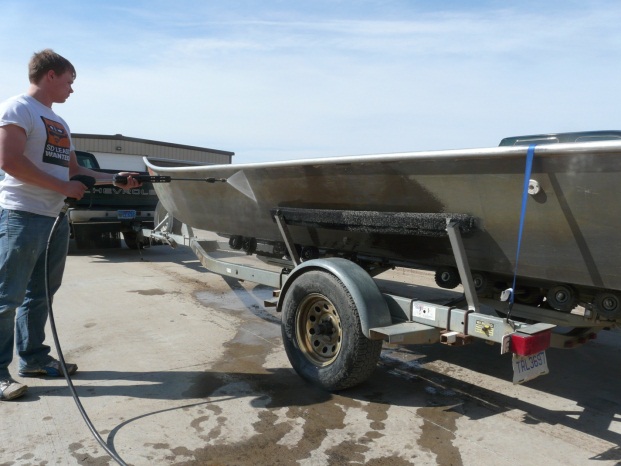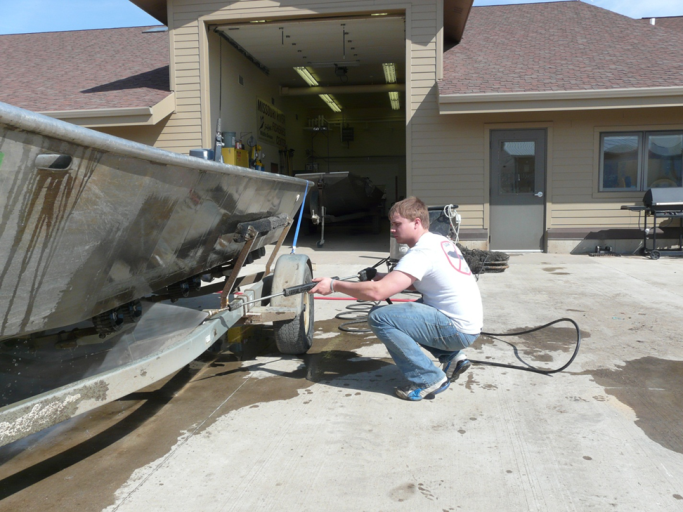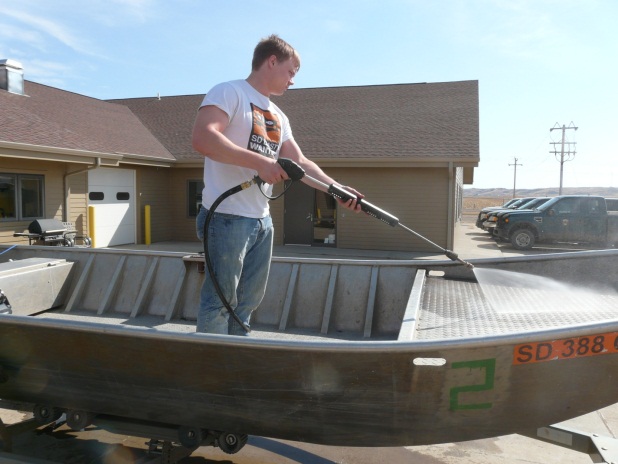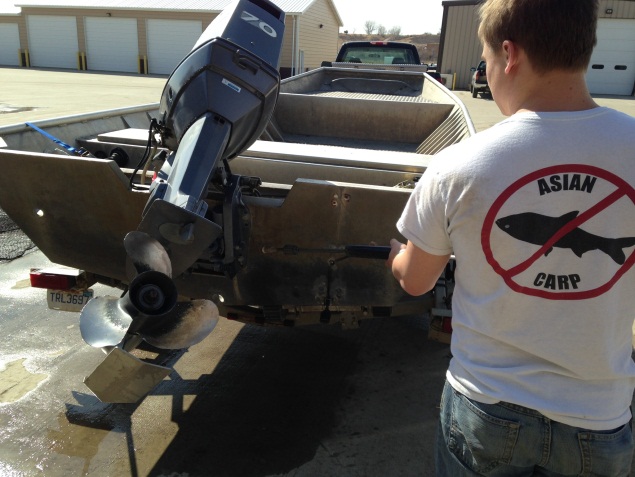boat washing tips and locations
We cannot mention this enough, but anglers and recreational boaters are the first line of defense in the fight against AIS.
Every boat operator should inspect their boat for attached mud, vegetation or animals before and after each launch. Pay close attention to the areas highlighted below.

Boat owners and operators should powerwash their boat as often as possible. When possible, allow your boat to completely dry between trips. In South Dakota this usually takes 2-4 days in the summer months and at least a week during the cooler months. Here are some tips to make powerwashing your boat efficient and effective.
If AIS are attached, boaters are required to decontaminate with a hot water power wash. Quagga Mussels, Zebra Mussels and Asian Clams are very small and difficult to see on boats and trailers. A heated pressure washer is necessary to kill any remaining AIS not removed by pressure washing. High pressure-hot (140 degrees Fahrenheit) water should be used on the hull for 10 seconds on every surface using overlapping passes. For interior compartments such as live wells, bilge, motor intakes and ballast tanks, low pressure and slightly cooler (120 degrees Fahrenheit) water should be used for 120 seconds to flush the compartments. If hot water is unavailable, all surfaces and compartments must be thoroughly flushed and the boat should be allowed to completely dry for 5-7 days prior to use.
Boaters also need to raise and then lower their lower unit to remove any residual water out of the motor when decontaminating boats.
- Aquatic Invasive Species in South Dakota and Watercraft Inspection and Decontamination
More Information

Work from top to bottom and bow to stern on one side.
Repeat the procedure on the other side of the boat.

Be sure to wash the rollers or bunks on the trailer.

If possible, wash the interior of the boat and rinse all
compartments that may hold water.

Rinse the transom area with low pressure water to prevent damage to the motor and/or electronics.



